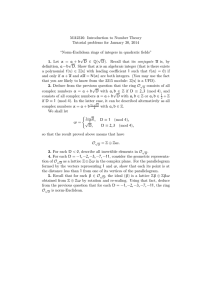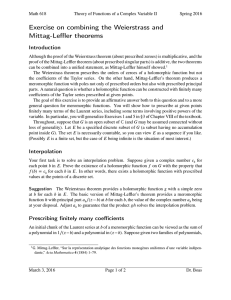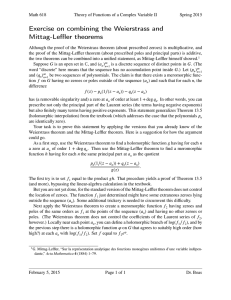Exercise on the Weierstrass
advertisement
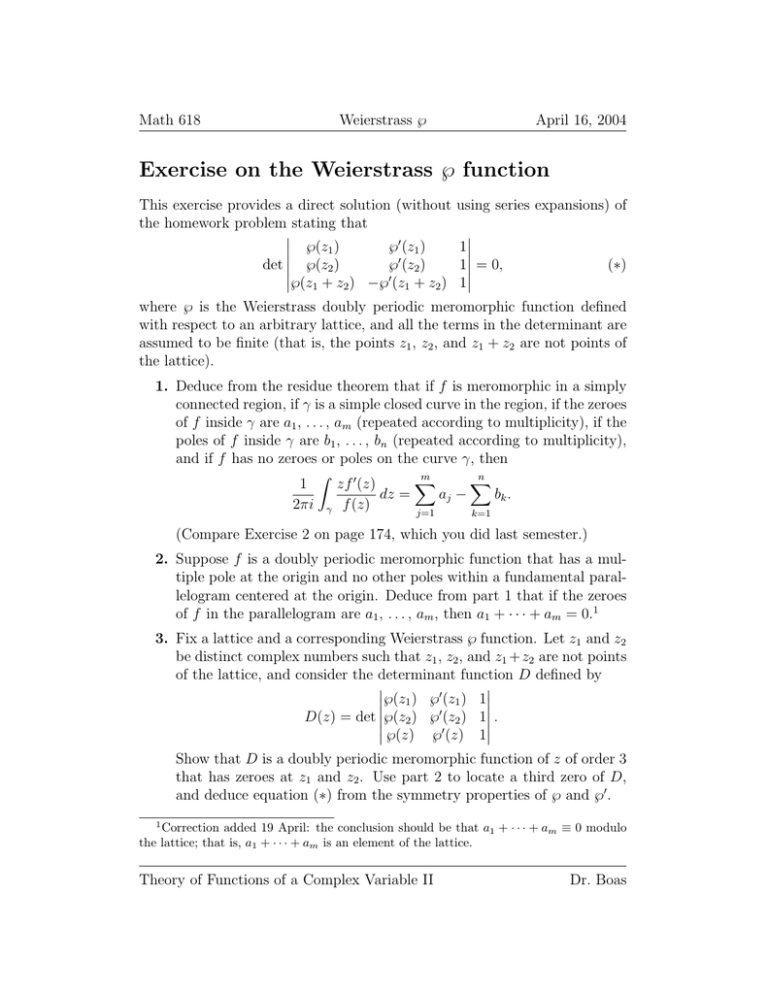
Math 618 Weierstrass ℘ April 16, 2004 Exercise on the Weierstrass ℘ function This exercise provides a direct solution (without the homework problem stating that ¯ ¯ ℘(z1 ) ℘0 (z1 ) ¯ ¯ ℘0 (z2 ) det ¯ ℘(z2 ) ¯℘(z1 + z2 ) −℘0 (z1 + z2 ) using series expansions) of ¯ 1¯¯ 1¯¯ = 0, 1¯ (∗) where ℘ is the Weierstrass doubly periodic meromorphic function defined with respect to an arbitrary lattice, and all the terms in the determinant are assumed to be finite (that is, the points z1 , z2 , and z1 + z2 are not points of the lattice). 1. Deduce from the residue theorem that if f is meromorphic in a simply connected region, if γ is a simple closed curve in the region, if the zeroes of f inside γ are a1 , . . . , am (repeated according to multiplicity), if the poles of f inside γ are b1 , . . . , bn (repeated according to multiplicity), and if f has no zeroes or poles on the curve γ, then Z m n X X 1 zf 0 (z) dz = aj − bk . 2πi γ f (z) j=1 k=1 (Compare Exercise 2 on page 174, which you did last semester.) 2. Suppose f is a doubly periodic meromorphic function that has a multiple pole at the origin and no other poles within a fundamental parallelogram centered at the origin. Deduce from part 1 that if the zeroes of f in the parallelogram are a1 , . . . , am , then a1 + · · · + am = 0.1 3. Fix a lattice and a corresponding Weierstrass ℘ function. Let z1 and z2 be distinct complex numbers such that z1 , z2 , and z1 +z2 are not points of the lattice, and consider the determinant function D defined by ¯ ¯ ¯℘(z1 ) ℘0 (z1 ) 1¯ ¯ ¯ D(z) = det ¯¯℘(z2 ) ℘0 (z2 ) 1¯¯ . ¯ ℘(z) ℘0 (z) 1¯ Show that D is a doubly periodic meromorphic function of z of order 3 that has zeroes at z1 and z2 . Use part 2 to locate a third zero of D, and deduce equation (∗) from the symmetry properties of ℘ and ℘0 . 1 Correction added 19 April: the conclusion should be that a1 + · · · + am ≡ 0 modulo the lattice; that is, a1 + · · · + am is an element of the lattice. Theory of Functions of a Complex Variable II Dr. Boas
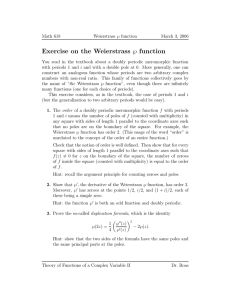
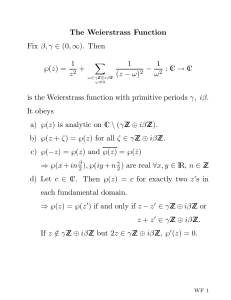

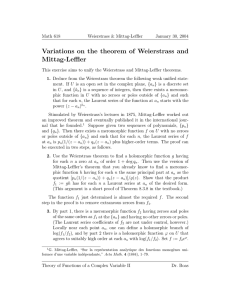
![Mathematics 414 2003–04 Exercises 5 [Due Monday February 16th, 2004.]](http://s2.studylib.net/store/data/010415766_1-b65af2bb66ab8e422354912dcedcb6a6-300x300.png)
